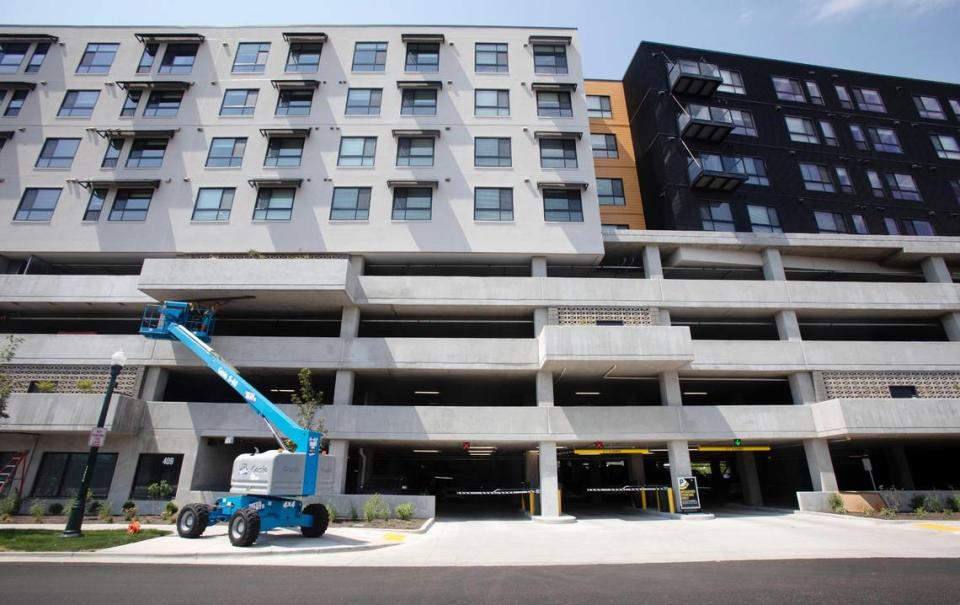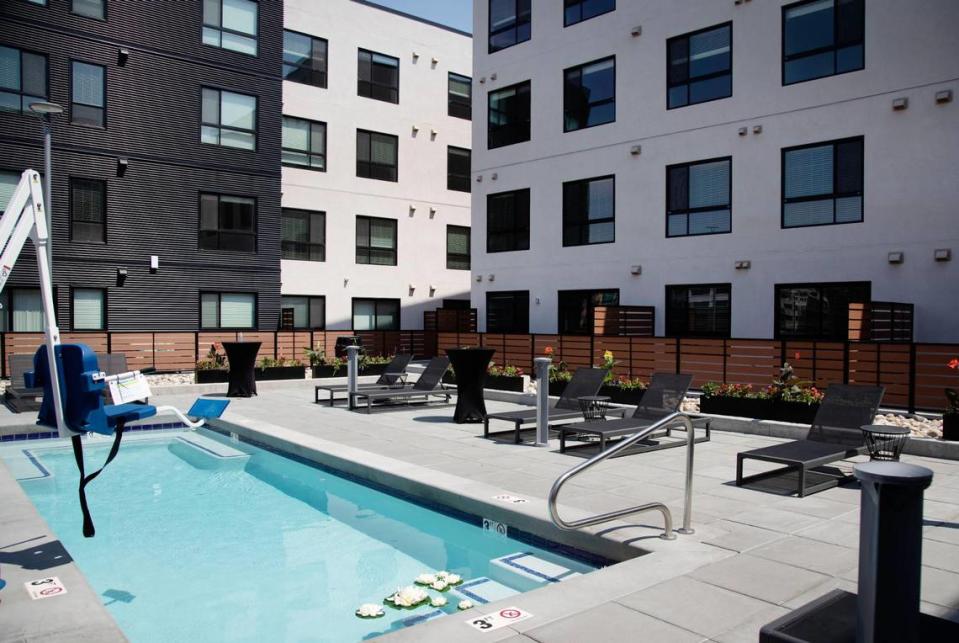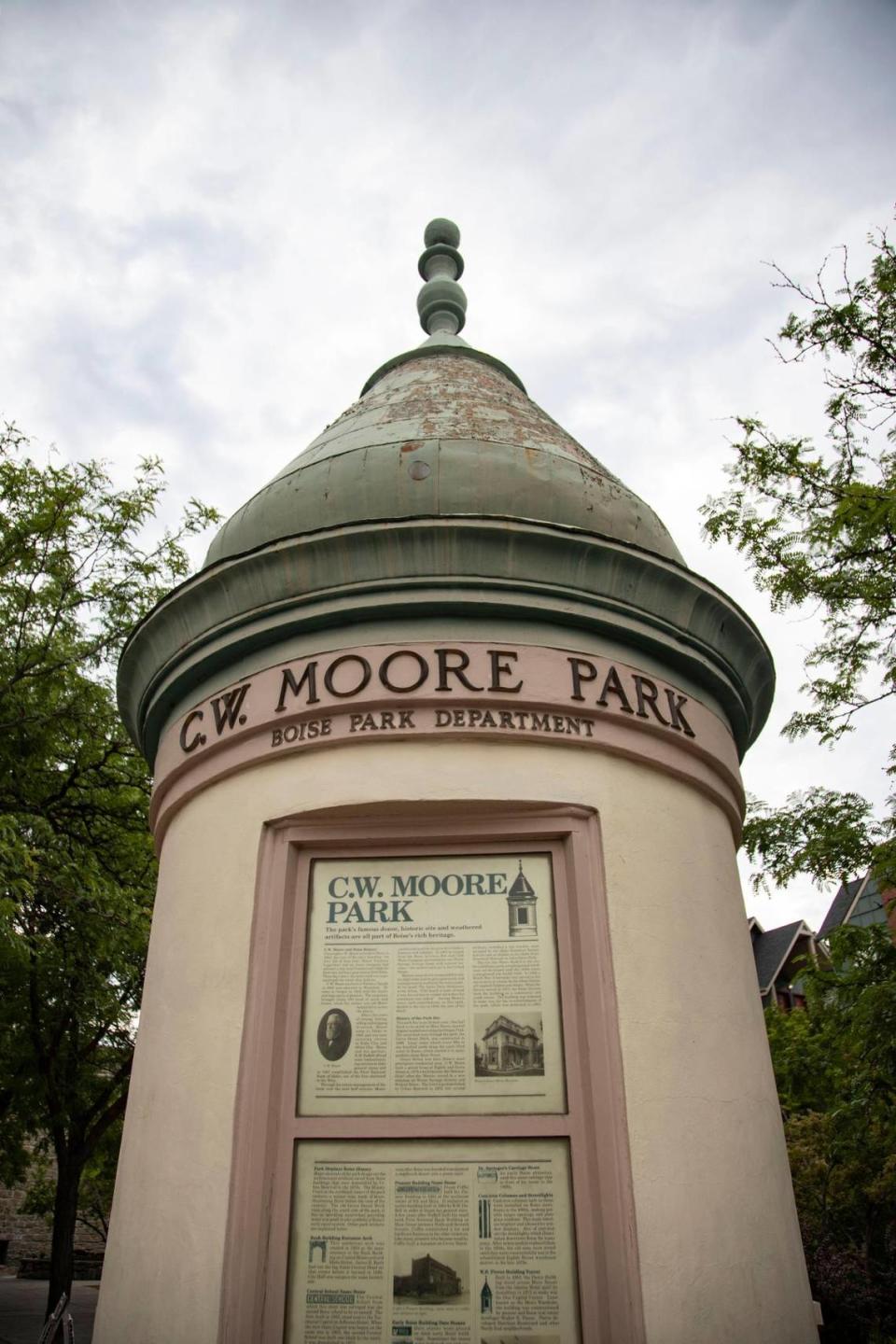Out-of-state developers all want a piece of Boise. Here’s how they’re changing things
In just a few short years, Boise has gone from barely a blip on the radar of out-of-state developers to one of the hottest markets in the country.
Ten years ago, a new building project was almost surely done by someone local. Today, more projects than ever are coming from developers in far-flung states.
It’s been a strange change for Clay Carley, a prominent local developer and owner of Old Boise, to watch unfold. Carley first became involved in development here in 2000. At the time, out-of-state developers were unheard of in Boise.
“There were none. Zero,” Carley said in a phone interview.
Casey Lynch, founder of Roundhouse, also remembers the days when the majority of projects were locally based. He was one of the first out-of-state developers on the scene in 2011. Most others didn’t understand Lynch’s desire to build in Idaho.
“For many years, we would tell people what we were doing, and as soon as we mentioned Boise, they turned around,” Lynch said in an interview. “Especially the big investors, like national level, were exclusively focused on coastal markets for the past decade.”
That lack of competition was part of what drew Lynch and business partner Mike Brown from California and to the Treasure Valley. Formerly a developer in Los Angeles, Lynch “saw L.A.’s housing affordability crisis looming” and decided to get out. He observed once-unnoticed markets, like Austin and Denver, booming. Lynch wanted to find the next Austin. He and his partner began visiting potential cities for development.
“We looked at Spokane and Bend and Salt Lake, Colorado Springs, Fort Collins, all these different places,” Lynch said. “And we landed in Boise. We got off the plane and were walking around downtown. It was beautiful and vibrant and walkable. All these people were going into work. Then we checked into our hotel and went back out for dinner and it was like there were tumbleweeds in the street. We were like, ‘Where did everyone go?’ ”
They began researching Boise and realized there had been little to no housing in downtown Boise for decades. Fewer than 4,000 people lived in downtown Boise in 2011. They had seen the revitalization of downtown areas in Seattle and Portland. Lynch thought: Why not Boise?

Lynch’s first project was remodeling The Owyhee, a former a historic hotel on the southwest corner of Main and 11th streets, into apartments. Roundhouse partnered with Carley to open the renovated building in 2014 with 36 apartments and 60,000 square feet of office space. Lynch saw it as an experiment to see if there really was demand for downtown housing.
In 2014, monthly rent at The Owyhee was $1,240 for a one-bedroom. Though considered expensive at the time, the units filled up quickly. Today, those same one-bedrooms start at $3,000. The building was sold to a branch of the Wisconsin-based development company Hendricks Commercial Properties in 2019.
The Owhyee’s success convinced Lynch that building a new apartment building downtown would be a worthwhile investment. When Roundhouse completed The Fowler in 2018, it was the first multifamily mixed-use project built in downtown Boise in more than 30 years.
“It wasn’t that long ago that we finished that,” Lynch said. “Now there are four or five residential high-rise buildings planned in downtown. And none of them are from developers who have ever worked in Boise before.”
The Fowler played a significant role in getting other projects off the ground, said Doug Woodruff, development director at Boise’s urban renewal agency, the Capital City Development Corp., or CCDC.
“Proof that type of construction can command the rents needed to make it a feasible product was something the banks needed to see,” Woodruff said. “Without local comps, there just wasn’t a lender in town, even in the Pacific Northwest, that was willing to take a deal. One of the the big barriers to why we weren’t seeing housing happening down here is folks just couldn’t get lending on it.”
The Boise market’s turning point
Carley traces the turning point in national developer interest in Boise to the coming of Whole Foods in 2012 and Trader Joe’s in 2014. He said those openings immediately sparked national attention. In the following years, more and more developers turned their eyes to Boise.
Lynch saw people begin moving out of California to smaller cities in the West like Boise. He himself moved to Boise. But it wasn’t until recently, according to local developers, that others began noticing. According to Lynch, many developers couldn’t let go of the idea that “coastal cities, like New York, L.A., San Francisco, Seattle,” were the only cities worthy of investment.
“It took the pandemic to really shine a light on these demographic trends that were already happening,” Lynch said. “But people weren’t paying attention to (cities like Boise), because (those cities) were out of the narrative that people had convinced themselves was true.”
Jules on 3rd is an eight-story, 173-unit apartment building at 412 S. 3rd St that opened this summer. The company that built it, Standard Communities, a Los Angeles-based real estate developer, co-owns and co-developed the project with Lansing, Michigan, commercial developer River Caddis Development.
While Standard Communities is one of the largest affordable housing developers in the country, the company had focused on property acquisition until Jules on 3rd. Its leaders chose Boise as the location of its first project built from the ground up after studying Boise’s “path of growth,” according to Robert Koerner, chief investment officer.
“It’s one of the fastest-growing cities in the country,” Kevin McGraw, president of River Caddis Development, said at the apartment’s grand opening. “It’s incredible. It’s a hospitable housing market. It had demand, and we’re trying to help fill it.”

Big investors moving in on little Boise
That disregard of price tags isn’t necessarily a good thing. Carley said out-of-state developers are “playing the long game.” They are willing to invest in projects with steep costs with the expectation that they will get a return on their investment in five to 10 years. Out-of-state developers often have deeper pockets, bigger visions and a greater ability to execute than local developers do, according to Carley.
“In the last five years, particularly the last two or three years, there’s been lots of outside money just saying, ‘We’ve got to be in Boise. If we don’t get in now, we’re going to miss it, in terms of the best locations,’ ” Carley said. “ ’So (they say), ‘We’re going to get in now, we’re going to get in hard, and we don’t care what the numbers are.’ ”
Lynch noted that those who develop outside their own areas are usually able to do so because they are large companies with big investors behind them.
Numbers still matter to many locals. It’s hard for those who remember the Boise market a decade ago to not see current market rates as inflated. When Carley bought a Front Street block containing the Boise Rescue Mission and a dry cleaner in 2007, the ground value was $50 per square foot. Fourteen years later, the ground value is about $150 per square foot. The property now holds the Home2 Suites by Hilton and a parking garage.
Other downtown developers he knows have seen similar value increases; “all the ground everywhere (in Boise) has gone up 200% to 300% in the last 10 years,” Carley said. As those out-of-state developers have come to dominate the market, Boise developers have been priced out in many cases.
“It causes local developments to not compete for the development because, in their minds, they can’t justify paying those inflated prices, because they … look at it as ‘at that price and with current construction costs, I can’t be getting money out of it for five to 10 years, and that’s not my business,’ ” Carley said.
Are investors invested in the community?
While some out-of-state investors are playing the long game, others are playing the shortest game possible.
“The bigger issue is developers that want to flip and make money,” Carley said. “They’re not thinking long term at all.”
While Woodruff doesn’t think that has happened yet, he is wary it could.
“What we’re ever present and watching for is the speculative developer that wants to basically just maximize the growth here, and build on spec, and then quickly get out of the project,” Woodruff said. “… Those sorts of projects have less thought and care put into the longevity of construction, the quality of finishes, and the overall contribution it makes to the community.”
It’s a mindset that developers weren’t always allowed to have in Boise. Lynch remembers how difficult it had been to win over the community when he first came to Boise. He saw a number of out-of-state developers grow frustrated with the slow pace of Boise real estate exchanges and give up in those early days.
He began coming to Boise twice a month to “get to know the community and get to know the history.” He said he had to win the trust of the local community before he became successful here.
Today, however, many longtime owners are more willing to sell as out-of-state investors offer more and more money for land.

More people means more needs
It is impossible to deny the rapid pace at which Boise is growing. Local government officials have been struggling to address the housing shortage. Out-of-state developers, with their deeper pockets and bigger visions, have been successfully building new housing.
“When we came, at that time, the city and CCDC had been conducting consulting studies and all these other things for years saying, ‘Hey, there’s demand for housing downtown,’ ” Lynch said. “But none of the local developers were of that mentality at the time. They had seen downtown Boise languishing for decades, and they just couldn’t see it.”
Local developers have benefited from out-of-state investors, too. Some developments, like the proposed Oppenheimer Development Corp. project to build Idaho’s tallest building, are coming out of joint ventures between local and non-local companies.
“One positive is you see a lot more capital for development,” Carley said. “Institutions that normally would not consider Boise are now anxious to do business in Boise, whether it’s a loan for a project or investment in a project.”
Hendricks Commercial Properties is an example cited by Carley as a company that is doing bigger things than most local companies could while making high-quality projects that benefit the community. The Wisconsin development company, owned by billionaire Diane Hendricks, is developing the Warehouse Food Hall and a new boutique hotel on The Owyhee property.
“We’ve been working in Boise for quite a while and we’ve really enjoyed it,” Hendricks CEO Rob Gerbitz said by phone. “It’s been a fun process for us. Everybody in the city has been so nice.
“We make an impact on the communities we are in by stimulating growth, creating jobs and honoring history. We’ve done that in our home in Wisconsin, and we have that blossoming wherever we are, wherever we build on a long-term basis.”
Larger projects still in the planning stages from out-of-state developers new to the market include:
The 19-story Ovation building, from Hovde Properties of Madison, Wisconsin. It would have 209 apartments at 521 W. Front St. The developer plans to spend more than $60 million.
The 27-story Oppenheimer project with 297 apartments at 1115 W. Idaho St. Oppenheimer Development Corp., run by locals Skip and Doug Oppenheimer, have teamed with White Oak Realty Partners, a Chicago developer, and Cleveland-based Ponsky Capital Partners for the project.
The 12-story senior apartment project with 160 apartments at 601 S. 8th St. Local developer Jordan-Wilcomb Construction is partnering with San Diego developer Global Senior Housing on the estimated $53 million project.
Two seven-story apartment buildings with a total of 358 units at 27th and Fletcher streets from California developer Kal Pacific & Associates.
A seven-story building with 169 apartments at 2801 W. Fletcher St. from Atlanta developer HBCBP LLC.
A $180.6 million project with more than 600 apartments split between a 20-story building at 10th and Jefferson streets and a seven-story building at 11th and State streets. The proposal comes from a joint-venture with Portland-based Edlen and local developers deChase Miksis and Elton Companies.
A bigger, better Boise
Carley believes the competition pushes local developers to do better.
“It’s exhilarating,” he said. “It’s exciting. It’s good. It should make everybody up their game and think harder about what they’re doing.”
He wants local developers to think of a time in the future when “all these outsiders” with “these outside concepts” have come and gone and ask themselves: “Is what you built still sustainable? Is it still good for the neighborhood you put it in?”
Carley is a fifth-generation Boisean. His great-great-grandfather was the acclaimed C.W. Moore, one of Boise’s most influential early citizens. He can walk through a park or building bearing his ancestor’s name. Developing in Boise isn’t getting a piece of the newest, hottest market for him. He is building a home for his descendants.
“The only recognition I want is for my great-great-grandchildren to say, “Great-great-grandpop built that,” Carley said.

Sally Krutzig covers Treasure Valley growth and development. Have a story suggestion or a question? Email Krutzig at skrutzig@idahostatesman.com.
Little wants businesses to build affordable housing, provide child care. Here’s how
Idaho legislator urges people to get vaccinated after his mother dies from COVID-19
Farmland development, apartments, a big sign atop a big Boise building: Coming near you

